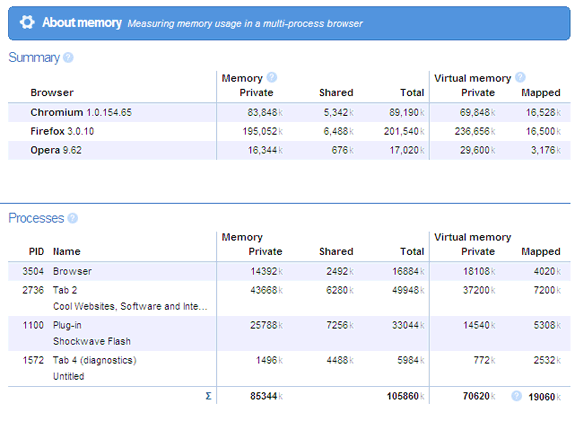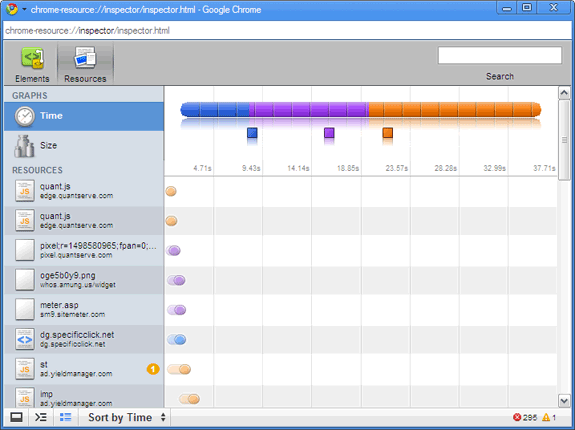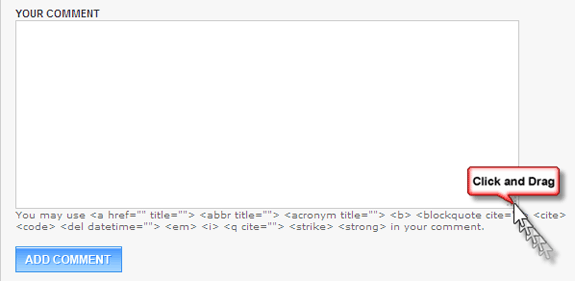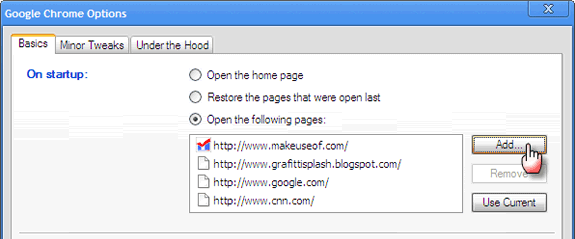A few tips on using Google Chrome
1. Adjust memory consumption
In general, Chrome launches each tab in a separate process. But it can be changed.
–Process-per-tab
This key in the browser launch options indicates that each tab should be launched in a separate process. This speeds up page rendering and makes the browser more stable, but requires more RAM. This mode is set by default.
–Process-per-site
This key tells the browser to run a separate process for each site. Say, if you have 2 tabs open with habrahabr.ru and 3 with gmail, then there will be exactly 2 processes.
–Single-process
')
This key tells the browser to run all tabs in the same process, as in most other browsers. Saves memory.
2. Use Task Manager to work with tabs.

By pressing Shift + Esc, you can call the Task Manager. It allows you to manage, restart or close each tab, without touching the rest.
3. Statistics for system administrators

This is an easy way to find out how much resources your running browsers consume on your system. You can start it by clicking on the “Statistics for system administrators / Stats for nerds” link in the Task Manager.
4. More statistics on the Resources page.

Click on the free space on the page and select "View item code". Here you can make out a page for parts. Analog Firebug in FF.
5. Changing the size of the text field is easy.

Just click on the bottom corner in the input box, pull and release.
6. Start with several start pages

By default, Chrome is launched from the page of the most visited sites. Go to Options-Basic-Start-Group-Open the following pages and add the start pages you need.
7. Managing downloads in Chrome is easy.

After the file has finished downloading, you can copy the file to the desktop by simply dragging the file icon.
Translation from here.
Source: https://habr.com/ru/post/60116/
All Articles